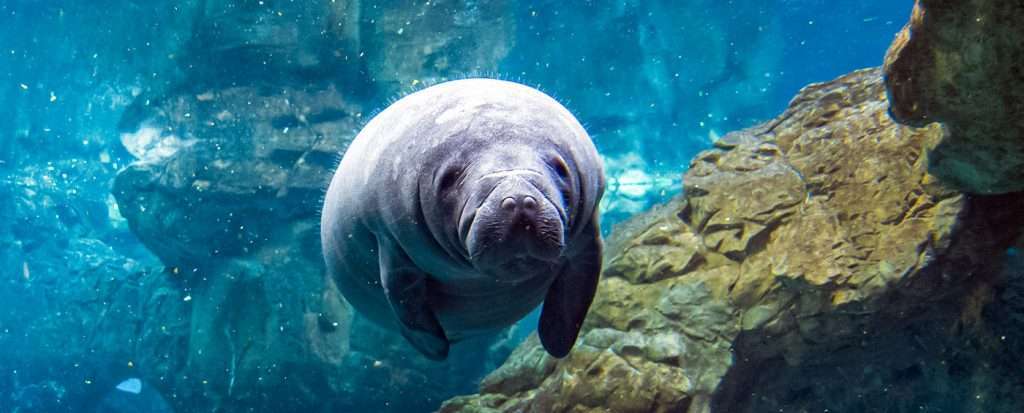I’m not sure how many people have the opportunity to kayak with manatees, but if you’re reading this and happen to be one of those lucky few then I hope that my blog post will provide some helpful advice on what to expect!
1. When and Where?
It is best to go kayaking in the early morning hours when it’s cooler and there are fewer boaters out. The spring months of March through June will give you a better chance at seeing these reclusive animals, as they come to the warm springs during this time of year to feed, socialize and give birth. In July they begin migrating back north into warmer waters heading toward their summer residence. They have been seen on Florida’s Atlantic coast from Volusia County southward all throughout winter months on Florida’s Gulf Coast.
2. How to kayak with manatees
When you approach a creature that is larger than yourself, it’s best to use an abundance of caution and not disturb them in any way until you get a feel for their behavior. Approach from downwind gently, don’t make sudden movements or loud noises, keep your speed down and remain at least 10 feet away from them while approaching from behind. If they are staying put, slowly paddle out of their immediate area while remaining parallel with them so as not to disturb their routine still getting a good look at them. If they are on the move, don’t chase after them or try to catch up with them. It’s best to let them come to you in their own time. To avoid being run over by one that decides to shoot out from under the water unexpectedly, maintain some distance so they can see where you are in relation to themselves. Once in this comfortable zone, keep yourself parallel with the manatee so as not to disturb its routine while taking in all of its splendor alongside your kayak .
3. What Precautions Should Be Taken?
Be respectful
Remember these are wild animals that have been displaced from their habitats for whatever reason. It is not advisable to approach one while it’s sleeping, feeding or giving birth. In fact, if you see a manatee with a baby, keep your distance and allow them space to bond as the mother will be less likely to leave her young unattended if there are humans in close proximity.
Give them space
When you approach one while kayaking, always try to give it some distance so as not to disturb their feeding or resting behavior. If they move away from your kayak , let them have their space and don’t trail behind them trying to catch up with them.
Be aware of your surroundings
Just because you’re out there on the water doesn’t mean that everyone is responsible enough to keep their boats under control. You could find yourself in a dangerous situation if someone unknowingly gets too close to you whether by speeding toward you without realizing your presence or cutting across your path. If it’s moving too fast, let them know they are in your vicinity by banging your paddle against your kayak or the water surface to alert them to your presence.
Be careful when you’re fishing
You may be out there trying to catch fish for dinner but remember these gentle creatures are also looking for a meal so take note of where you drop your fishing line and make sure there aren’t any manatees swimming nearby before reeling it up. The last thing you’d want is to injure one with a hook because you didn’t realize they were next to the boat.
Fasten your kayak properly
Make sure to fasten all ropes securely especially if you’ve had manatees around. For example, manatees are known to bump against boats while they’re resting but will not intentionally damage or flip it over unless panicked by noise or sudden movement. It’s best however that boaters are mindful of manatees who might be resting under their vessels especially during low tides since they may be in a manatee’s natural resting spots.
Use manatees as an excuse to get out on the water
They are known to inspire people of all ages especially kayakers to take up paddling so they can experience manatees in their natural habitat. A manatee encounter is not something you see every day so enjoy it. They are wild animals but that doesn’t stop them from being gentle ones who love being around humans especially kids and adults alike who aren’t too intrusive when it comes down to them.
Have an binocular handy
Binoculars are great for spotting manatees. You can spot manatee calves playing or mothers feeding on algae that grows underwater during low tides. Paddle closer if you wish but keep safe distances just in case there’s more than one manatee in the area.

